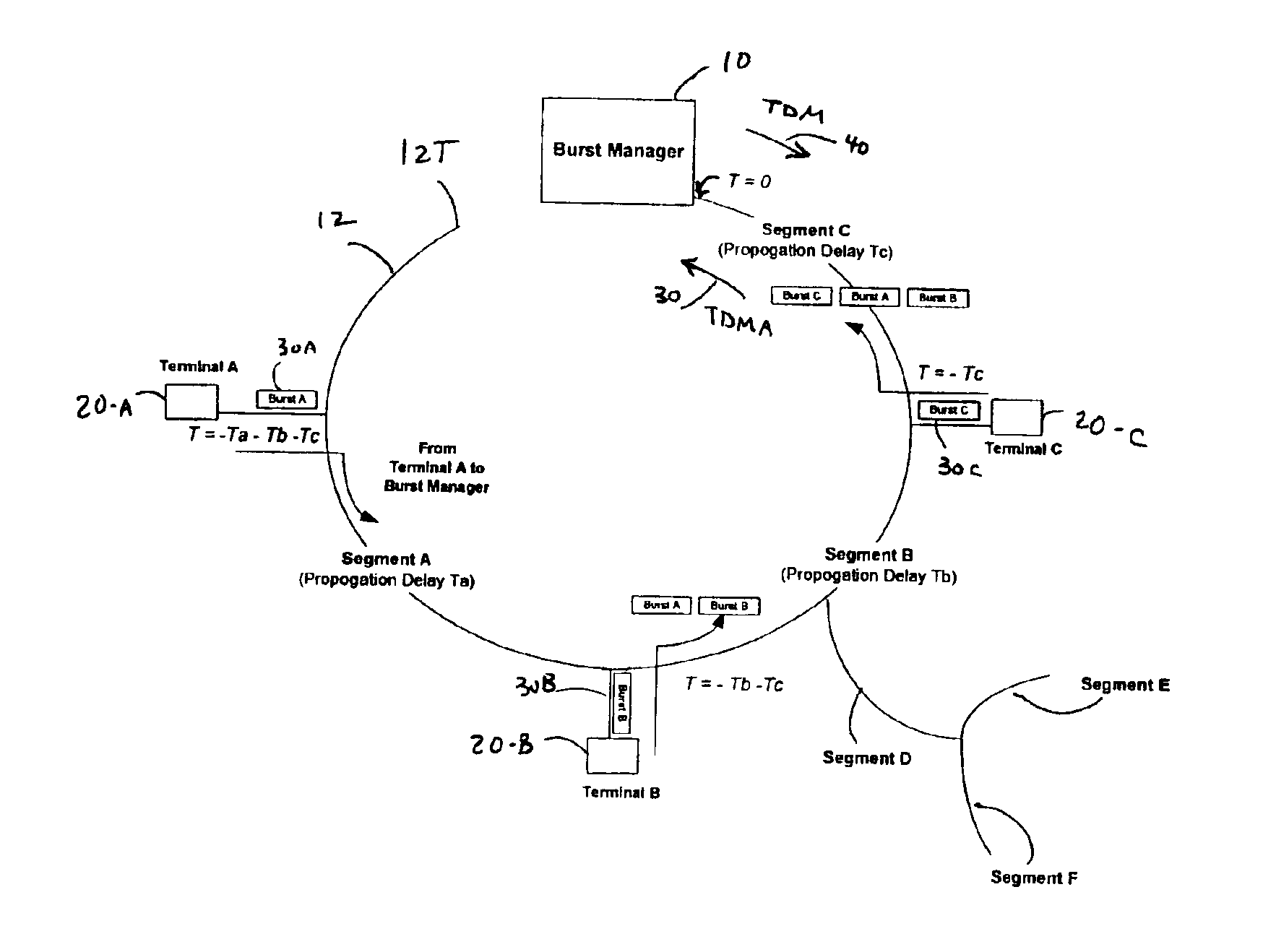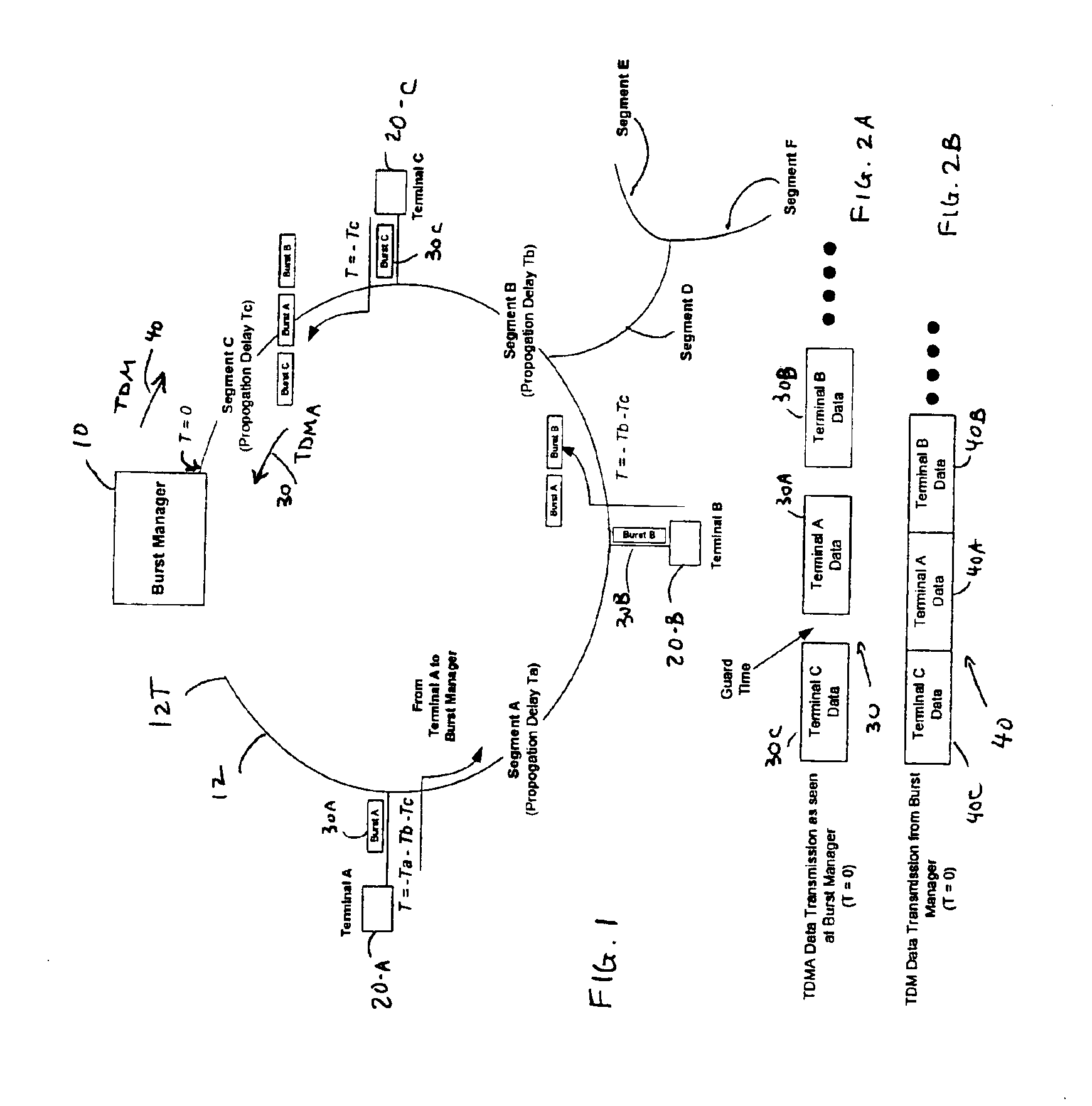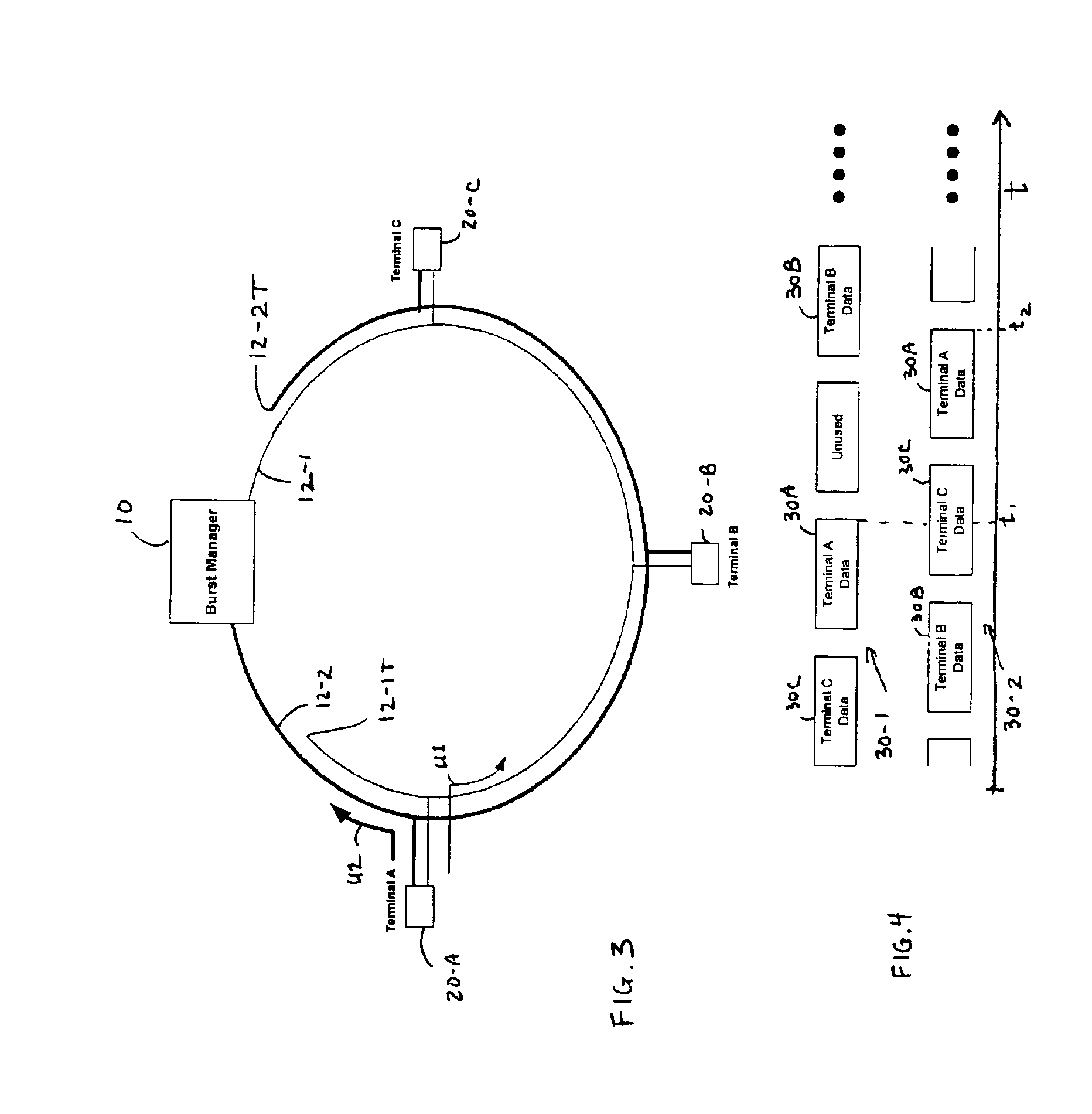Method and apparatus for redundant transmission over TDMA optical networks
- Summary
- Abstract
- Description
- Claims
- Application Information
AI Technical Summary
Benefits of technology
Problems solved by technology
Method used
Image
Examples
Embodiment Construction
[0025]Transmission from multiple devices, wherein each device is located at a different physical distance (in a range from a few feet to many miles apart), can be provided using TDMA. A TDMA access technique requires that each device that transmits does so by bursting its information onto a common physical medium at a specifically assigned time. Transmitted signals from different physical devices are received without collision by a central terminal, also referred to as a burst manager, by allocating specific non-overlapping timeslots to each device and by offsetting the bursts, in time, to account for the difference in propagation delay between devices. Otherwise, the transmissions from two devices could collide at some common point in the network, causing loss of data.
[0026]FIG. 1 shows a single network which illustrates transmission in a typical passive optical network (PON). For simplicity, three remote terminals 20-A, 20-B, 20-C are shown in the network connected to a burst mana...
PUM
 Login to View More
Login to View More Abstract
Description
Claims
Application Information
 Login to View More
Login to View More - R&D
- Intellectual Property
- Life Sciences
- Materials
- Tech Scout
- Unparalleled Data Quality
- Higher Quality Content
- 60% Fewer Hallucinations
Browse by: Latest US Patents, China's latest patents, Technical Efficacy Thesaurus, Application Domain, Technology Topic, Popular Technical Reports.
© 2025 PatSnap. All rights reserved.Legal|Privacy policy|Modern Slavery Act Transparency Statement|Sitemap|About US| Contact US: help@patsnap.com



